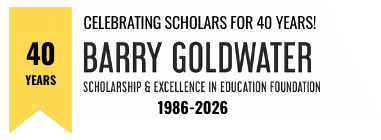“My first and only piece of advice for students interested in a career in STEM is believe in yourself. Ignore the imposter syndrome voice in your head that says you aren’t good enough. You are.”
I grew up in a poor rural town in central New York. Although I was interested in science from a young age, my interest in chemistry didn’t blossom until I started at Hamilton College in 2006. In particular, I was fortunate enough to participate in a pre-freshman summer research program studying organic chemistry with Prof. Ian Rosenstein (even though I didn’t know what organic chemistry was at that point!). My passion for scientific research was born that summer, and I eagerly participated in three more summers of undergraduate research at Hamilton College, the University of Pennsylvania, and Columbia University. Due to my underprivileged background, I was unsure about my career plans when I first started college. However, receiving the Goldwater Scholarship in my junior year at Hamilton College validated that research was the best path forward for me. Therefore, I decided to go to graduate school to further pursue my interest in organic chemistry.
I graduated from Hamilton College summa cum laude with degrees in Chemistry and Mathematics in 2010. After much deliberation, I decided to carry out my graduate studies at the Massachusetts Institute of Technology as an NSF Graduate Research Fellow. At MIT, I worked with Prof. Stephen Buchwald to investigate the Pd-catalyzed fluorination of aryl sulfonates and halides. I was drawn to this project because fluorination is incredibly challenging yet critical to the advancement of medicinal chemistry, as >30% of small-molecule pharmaceuticals contain a carbon-fluorine bond. Through careful mechanistic analysis, I was able to greatly advance this transformation towards practical utility. Building upon this research, I also developed Pd-mediated 11C-cyanation as a strategy to prepare new radiotracers for positron emission tomography (PET), one of the best biomedical imaging techniques available to doctors. Excitingly, we were able to employ radiotracers I prepared to image the brains of mice, which is something I never thought I would do when I started graduate school.
After completing my PhD in Organic Chemistry in 2015, I decided to expand my research interests into the area of materials science, hoping to broaden my horizons as a research scientist. As such, I worked as an NIH post-doctoral fellow at the University of California, Berkeley with Prof. Jeffrey Long. My post-doctoral research focused on tackling one of the biggest challenges facing society: rising atmospheric levels of carbon dioxide. I prepared new porous materials capable of removing carbon dioxide from the emissions of coal and natural gas power plants and even directly from air. It was exciting to see materials I developed move from the concept stage to patented materials that have now been prepared on >1 kg scale as part of a start-up company.
In 2018, I accepted a position at Cornell University as an assistant professor. My group’s research aims to unite my two passions – organic synthesis and materials science – to develop new porous materials for solving challenges in human health, medicine, energy, and the environment.

